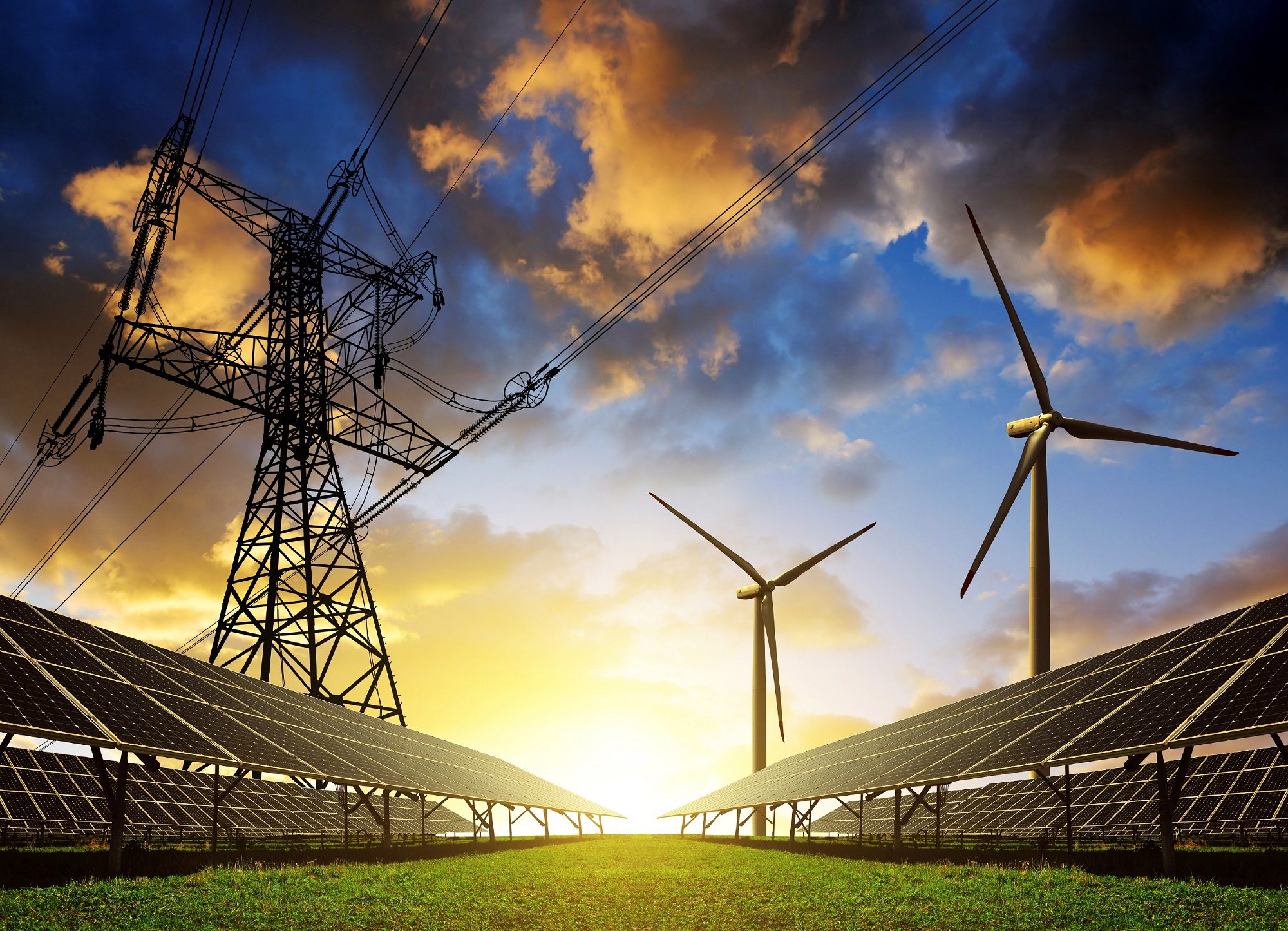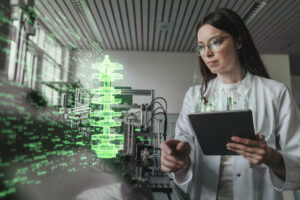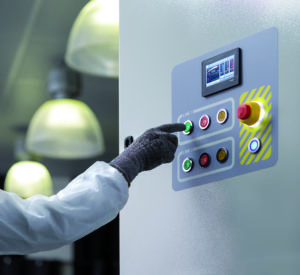Alexander Graham Bell (the telephone) and Thomas Edison (electricity) were two of the greatest groundbreaking pioneers in history. Imagine if the two were alive today to witness the evolution of their thinking. While the chances are pretty good that Bell would have no idea what a smartphone was, Edison’s electrical transmission lines are, conversely, still a mainstay today. Acknowledging the foundation laid by these two scientists is crucial in understanding how we are on the cusp of an energy revolution – especially one that will dramatically change the landscape of how energy is created, transmitted, and stored.
First, let’s quickly review the creation and distribution of electricity today:
– Generation is the process of converting energy into electricity. Power plants generate electricity from a variety of energy sources: fossil fuels, nuclear reactions, and renewables.
– Transmission refers to transporting electricity (typically over long distances) from the power plants where it is generated to the neighborhoods and cities where it will be used.
– Distribution is the process of transferring electricity over a relatively short distance from transmission cables into a home or business.
The electric grid is composed of the network of transmission and distribution infrastructure that powers a region. Electricity is generated using a variety of different sources. Once it flows onto the grid, however, electricity from different sources cannot be differentiated. Think of electricity on the grid-like water in a pool; if several people pour water into a pool, the water mixes together and the water from different sources cannot be distinguished.
Decentralize, Decarbonize, and Digitization Driving Trends
The power on the grid must be balanced, meaning the amount of electricity supplied at any time must match the amount used. Too much power could overheat wires or damage equipment. Too little power can lead to disruption problems, such as blackouts and brownouts. Utilities and policymakers agree that our aging power grid system needs to be updated to meet the growing demands for energy.
What complicates this is the massive amounts of power required for the digital transformations that are happening now and progressing at an unprecedented rate. Buildings account for a large part of rising energy demand, with their consumption nearing 50% between 2018 and 2050.
Electrification of cars is another substantial driver of energy consumption as the deployment of charging stations is expected to grow with a compound annual growth rate (CAGR) of 48.6% from 2020 to 2027 – this means 500,000 charging stations versus the 150,000 gas stations in the US today. With more than 19 million electric vehicles expected to be in service by 2030, this infrastructure and energy requirement will all be incremental to the existing load today.
Between the increasing demand for electricity and balancing the load on the system enters emerging demands for sustainability. As costs start to come down on renewables and government incentives for sustainability continue to rise, we will see increasing adoption of distributed energy resources (DER), such as solar and wind installations. Investment in DERs in North America is growing at around 10% CAGR.
All of this must be accomplished in tandem with the growing need for “always-on” electricity. Environmental-based scenarios, such as wildfires in California, hurricanes in Puerto Rico, and snow/freezing temperatures in Texas, have all impacted the existing electrical system resulting in significant downtime.
All combined, these factors, aging infrastructure, increasing demand, a push for sustainability, and the need for more resiliency, are driving the industry to adopt change. This convergence of electric and digital at scale, or ‘Electricity 4.0’, powering a New Electric World, will be vital to maintain a resilient power value chain and to achieve net-zero.
The Growth of Distributed Energy Resources (DERs)
As public perception of responsible practices grows, so does the pressure on businesses to implement sustainability strategies. While the term “Sustainability” is not new and is well understood – its adoption has typically been slowed by three factors: adoption cost, price of the energy they produce, and their complexity of operation. These factors are being rapidly addressed today and are catalysts for faster adoption in the marketplace.
From a cost standpoint, perhaps the largest contributor is the new infrastructure plan (America Jobs Plan), currently proposed by the White House administration. One of the key focuses of this plan is to inject funds into businesses to adopt sustainable practices. This $2.3 trillion plan to modernize America’s ailing infrastructure, including microgrids, will enable businesses and consumers to shift to cleaner energy. This funding will also drive investments in renewable energy such as wind, solar, and battery storage systems – enabling new technologies and availability to further decrease the cost of adoption.
DERs continue to see growth and advancements in technology – which has driven down the cost of the electricity they have produced in recent years. The adoption of Battery Energy Storage Systems (BESS) provides the ability for solar and/or wind farms to store excess energy produced – enabling renewable energy to be used regardless of the time of day or the weather.
Lastly, the control systems of DERs have undergone significant advancement in recent history. Energy source management has traditionally been simple – there was a utility and a generator. Power resiliency was the main objective and the sequence of operation straight forward: utility power goes out; a transfer switch moves to the generator. The utility is restored, and the transfer switch moves back. With DERs, power resiliency is only one of many objectives. Energy sourcing can now be based on sustainability goals (ex. energy credits), availability of a renewable (ex. sunlight), etc. These decisions are based on data and the coinciding analytics driven by cloud-based systems. Advancements in this area are enabling very sophisticated automated energy sourcing and load management solutions.
Approaches to Solving the Energy Equation Moving Forward
With a clear understanding of the gaps in traditional electrical infrastructure and the significant benefits of the new energy landscape, we are left with the obvious question of “how do we get there from here?”. To help answer that question, we need to identify that each environment will be at a different phase of its lifecycle.
Some will be in the planning/designing stage, others in building – while a significant amount are already in an operate and maintain phase. Given the critical nature of many electrical systems, downtime and risk are generally intolerable and must be kept to a minimum if allowed at all.
To minimize risk and downtime, as well better control deployed DERs, we see the need for microgrid solutions. A microgrid can operate in grid-connected and stand-alone modes and can balance the transition between the two. Microgrids also offer an option to balance the need to reduce carbon emissions by continuing to provide reliable electric energy when renewable sources of power are not available.
A microgrid may transition between these two modes because of scheduled maintenance, degraded power quality or a shortage in the host grid, faults in the local grid, or for economic reasons. By means of modifying energy flow through microgrid components, they facilitate the integration of renewable energy without requiring a re-design of the distribution system. Modern optimization methods can also be incorporated into the microgrid energy management system to improve efficiency, costs, and resiliency.
Whether new construction or retrofit, the need to begin implementing connectable systems is paramount. Connectable systems are “smart” – they capture data and can communicate this data into control and automation systems to enable actionable intelligence. These connectable systems form the backbone of the electrical system of the future. Whenever possible, these systems should be digitally designed, and factory assembled and tested as a system to ensure the highest level of resiliency and eliminate human error from field-based upgrades. The Energy Control Center (ECC) from Schneider Electric is an example of this type of integrated, factory-tested system that is the basis of the innovation of Schneider’s Microgrid solution. Fully connectable, the ECC is a pre-engineered system that reduces the complexity of designing, installing, and operating a source and load management electrical distribution system.
Embedded inside the ECC resides the EcoStruxure Microgrid Operations (EMO) and Advisor (EMA) platform. These control and automation solutions enable the effectiveness and performance of the system – ensuring the right sources and loads are powered based on machine learning. These tools take the guesswork and complexity out of the DER landscape, enabling businesses to take full advantage of sustainable energy without sacrificing the need for resiliency and increasing energy loads (ex. EV charging for automobiles).
The design/adoption of the ECC has been dramatically simplified with the creation of the EcoStruxure Microgrid Builder (EMB). This design tool enables a complete control system for DERs to be configured in less than one hour. The output of this tool is then downloaded inside the ECC system, tested in a controlled factory environment, and then easily installed in a new build or retrofit environment. The digitization and simplification of the DER architecture simplify adoption in the future. These microgrid solutions are helping businesses become more energy-efficient and sustainable while decreasing the risk and costs associated with traditional solutions.
It’s Not IF, it’s WHEN
The challenges of the existing electrical infrastructure are clear – It’s aging, failing on larger scales, carbon-emitting, and continuing to show weakness. The electrification trend is growing – digitization across every industry, an ever-increasing number of electronic devices, and the adoption of electrical vehicles – all while the need for more resiliency grows. DERs now offer commercially viable solutions with lower costs and advanced technologies and the current administration is poised to inject Billions to promote their adoption.
The question seems to be quickly moving from “If” DERs will be massively adopted to “When” they will be adopted.
With the “When” assumption in mind, what should you be doing differently today? First, ensure all new construction or modernization systems are connectable, even if there is not a DER deployed today. Doing so will prevent stranded investment as field upgrading to connectable systems will be cost-consuming as well as challenging to resiliency (factory test v. field tested). Next, adopt automation and control management systems in the electrical infrastructure. Take advantage of that collected data to enable actionable intelligence inside the energy infrastructure. Finally, look to microgrid solutions to help reduce risk and cost for your business, as well as the drive toward your sustainability and efficiency goals. By animating these
initiatives within your business, you’ll be able to prepare yourself for the New Energy Landscape, take advantage of stimulus funds, and increase your energy resiliency – all at the same time.




